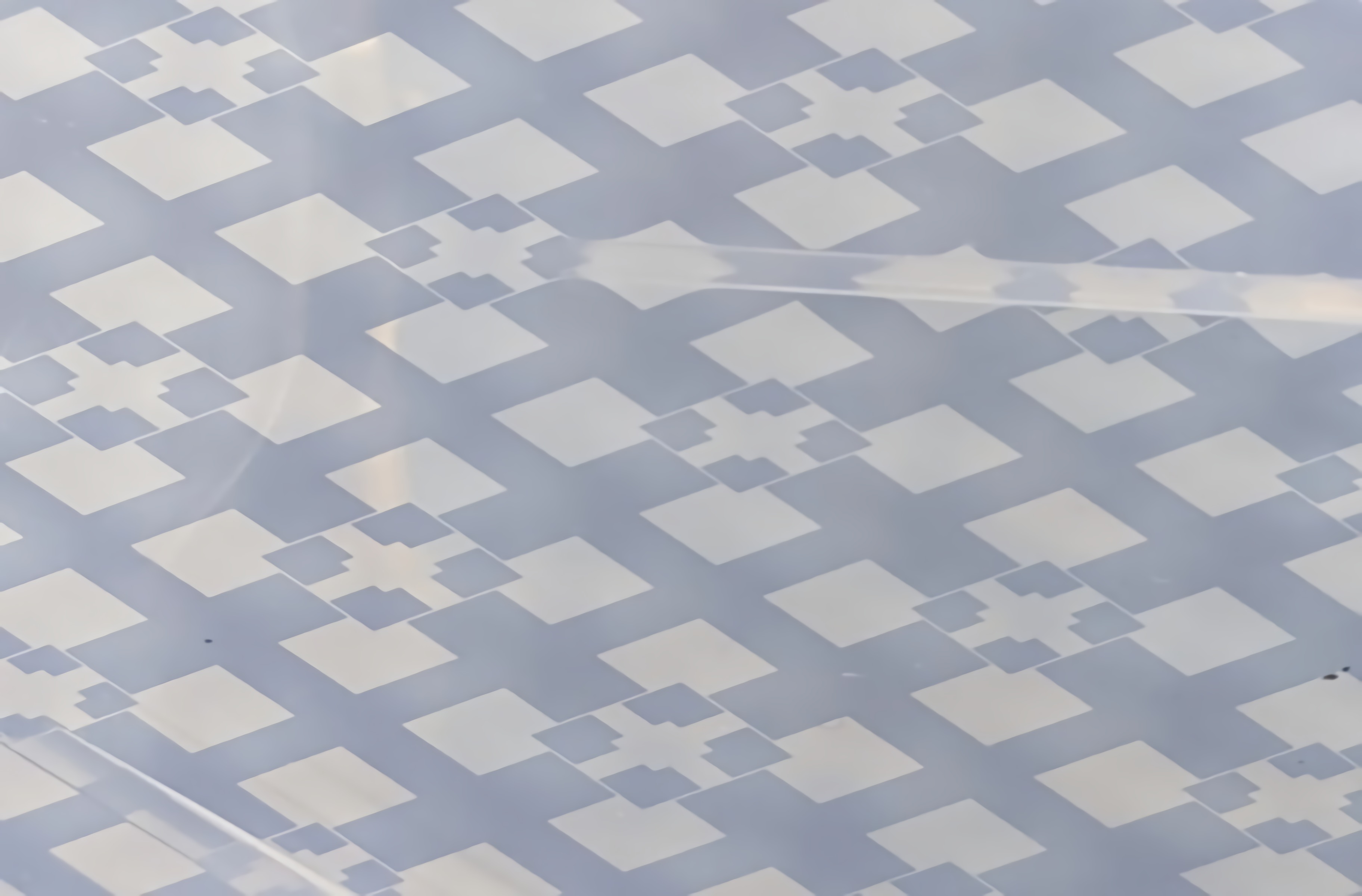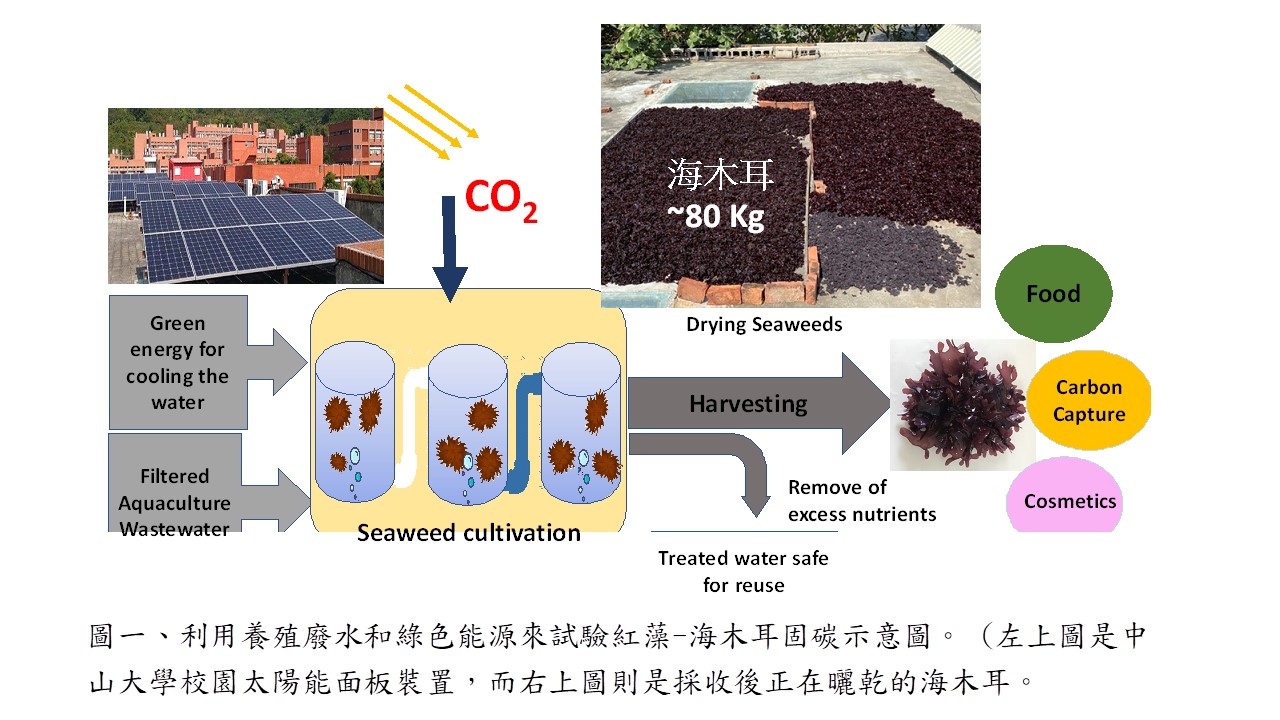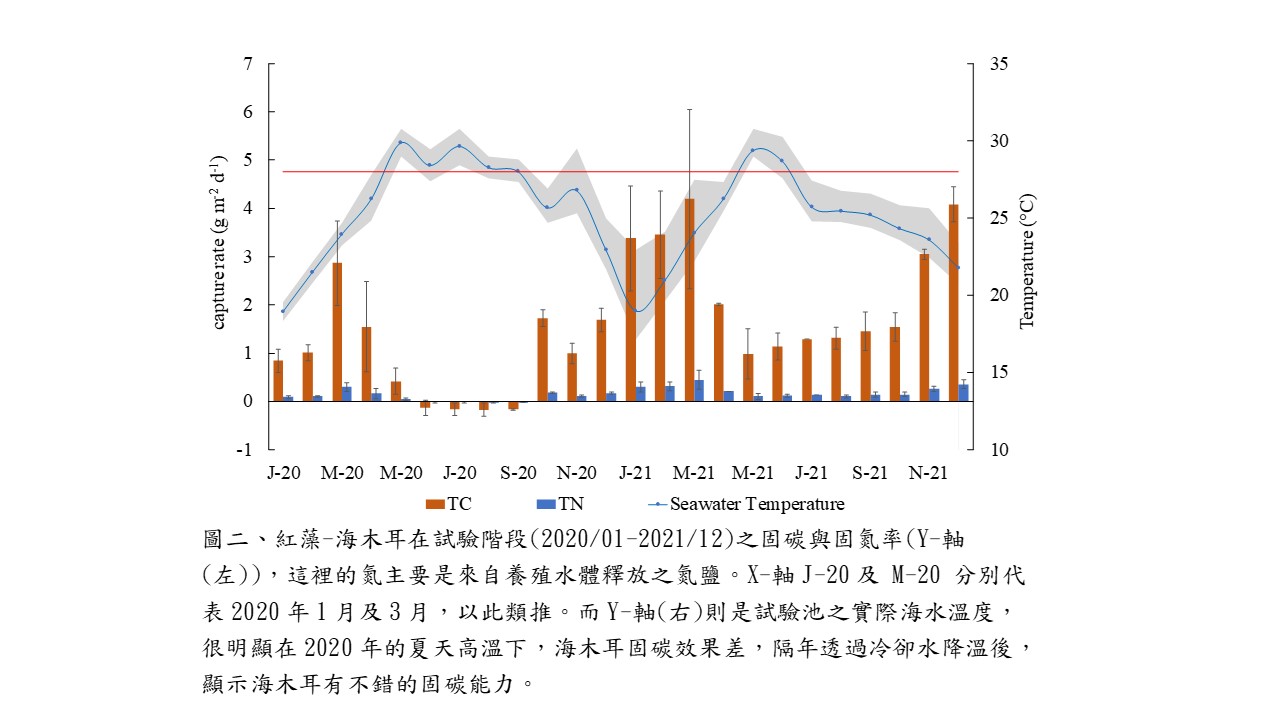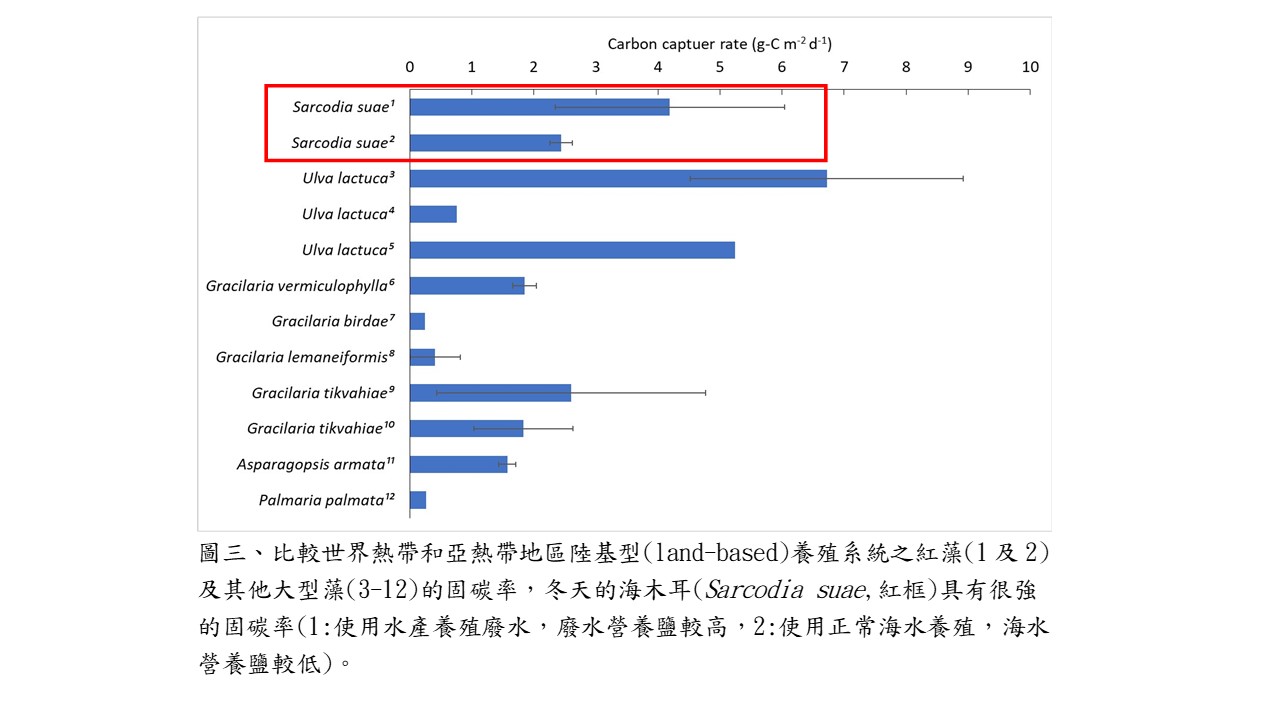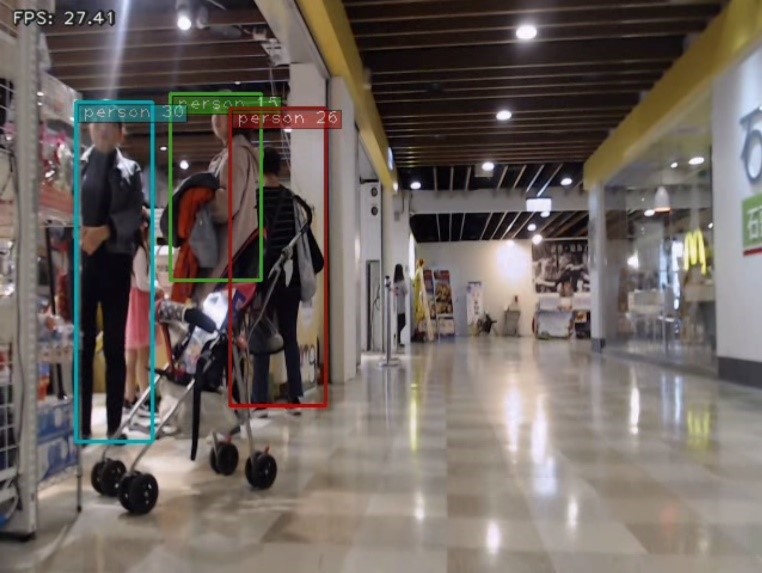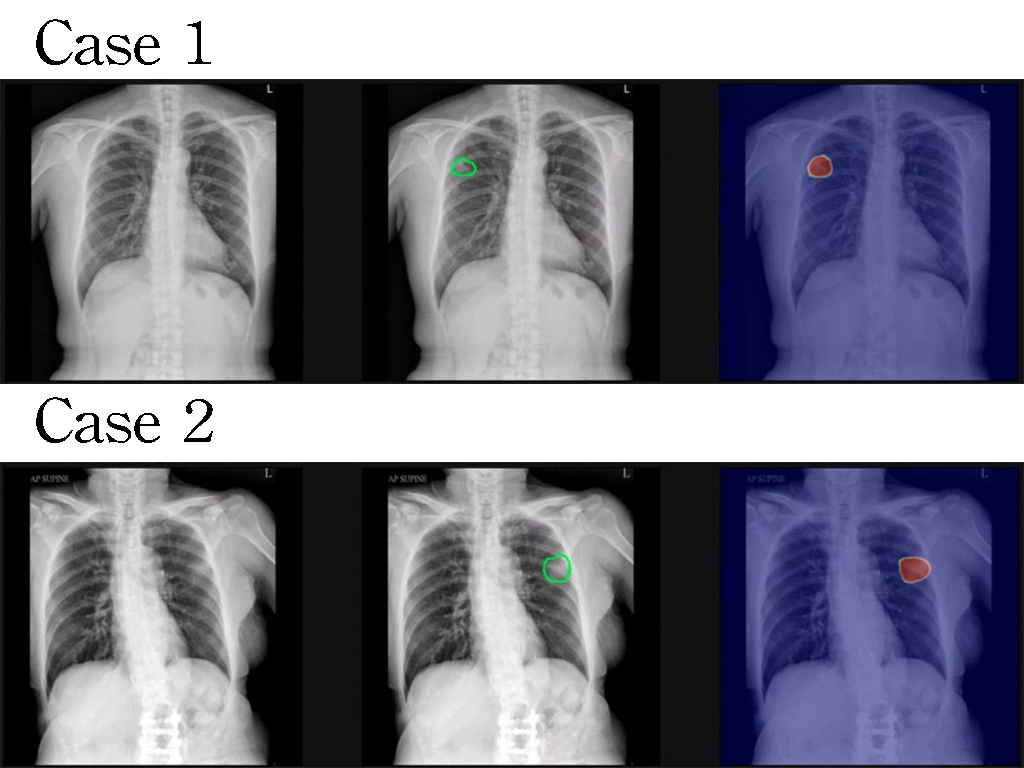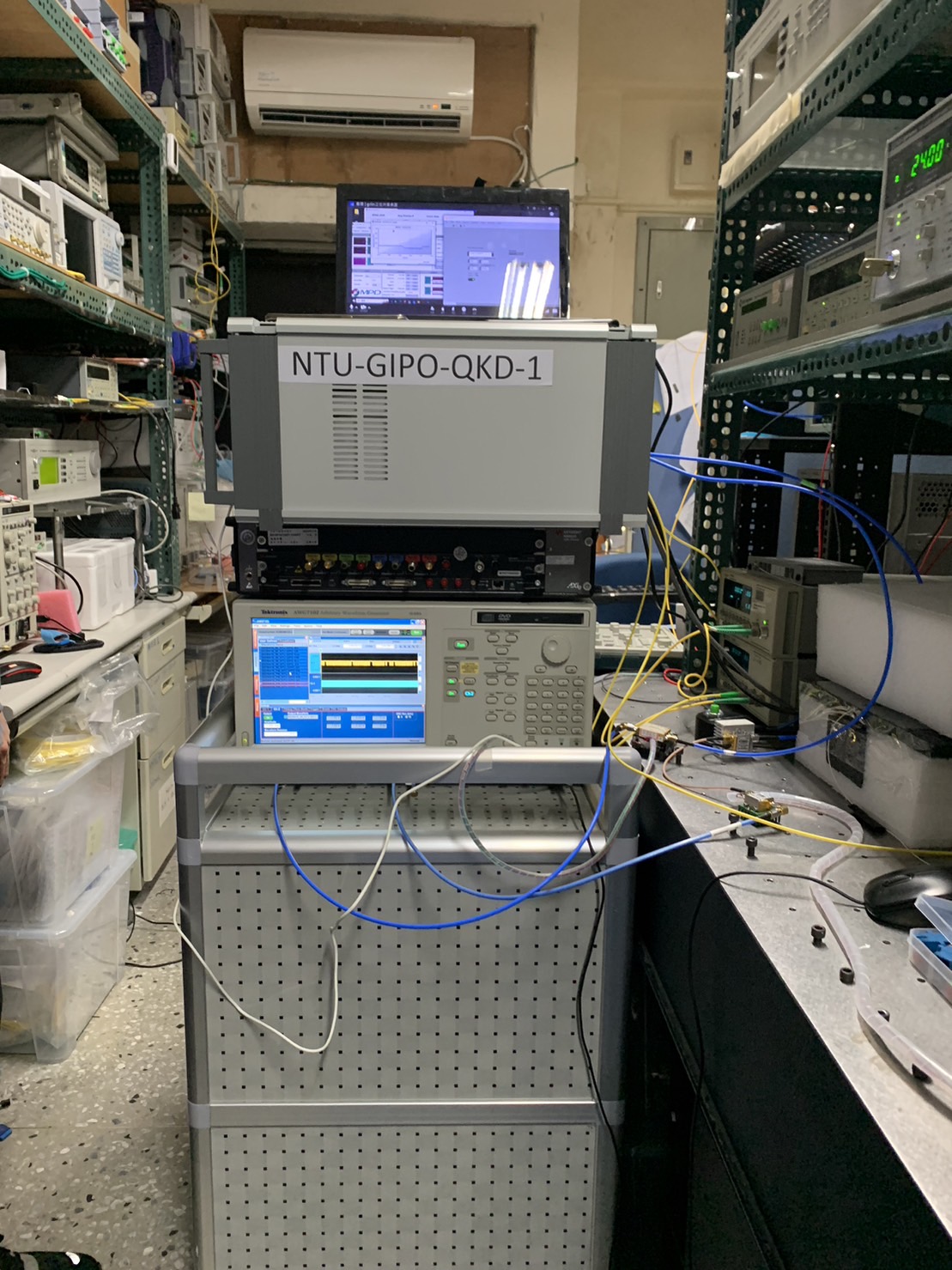| Technical Name | A carbon capture warrior-Sarcodia suae | ||
|---|---|---|---|
| Project Operator | National Sun Yat-sen University | ||
| Project Host | 洪慶章 | ||
| Summary | Seaweeds are potential carbon sequestration warriors. However, elevated seawater temperature in Taiwan in summer is not suitable for seaweed cultivation. We tested the carbon sequestration rate of red seaweed, Sacordia suae, using aquaculture wastewatergreen energy cooling,found that the average carbon sequestration rate of sea fungus (2.5 g-C/m2/d, equal to about 33 ton-CO2 ha-1 y-1) was more than twice that of Taiwan Daan Forest. If this seaweed cultivation technology can be extended to a large-scale aquaculture farming in the future, it will be a major contribution to Taiwan's promotion of net-zero carbon emissions. |
||
| Scientific Breakthrough | We tested seaweed, Sacordia, with aquaculture wastewatergreen energy cooling,found that it can be cultivated throughout the year,the best carbon capture rate (CCR) occurs in winter, about 4.1 g-C/m2/d (about 54 ton-CO2 ha-1 y-1) . According to literature reports, the carbon capture rates of foreign seaweeds are 1~6 g-C/m2/d (about 13~79 ton-CO2 ha-1 y-1) (Figure 3). The CCR of Sacordia is only followed to Ulva lactuca (Ulva: 5-6 g-C/m2/d). On the other hand, in our experiment: we overcame the high temperature in summerused a simple filtration system to supply nutrients to Sacordia, which not only reduces nutrient emission of wastewater, but also enables carbon capture throughout the year using abundant LNG cooling water. |
||
| Industrial Applicability | Sacordia has high nutritional valueis an important material for healthy food, beveragescosmetics with high economic value. Our study can overcome elevated seawater temperature in summerhigh turbidity in pond water. Our developed module plus abundant LNG cooling water has great potential to develop to a large-scale seaweed aquaculture farming, which can not only reduce the discharge of aquaculture wastewaterincrease carbon sequestration, but also generate considerable carbon-right benefits. Most importantly, seaweed farming can produce remarkable carbon sequestration when cultured in aquaculture farm first year rather than planted trees waiting for five yearlonger time to see their carbon capture. |
||
| Keyword | Climate change net carbon zero emissions carbon neutral carbon capture carbon sequestration seaweed Sacordia suae carbon capture of seaweed seaweed aquaculture nutrient | ||
- Contact
- Chin-Chang Hung
- cchung@mail.nsysu.edu.tw
other people also saw

The development of bioconcrete with photocatalytic, hydrophobic, antivi ral and antibacterial functions using microbial induced precipitation
